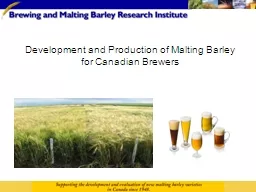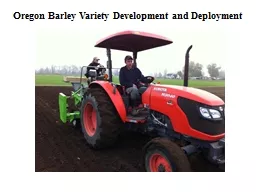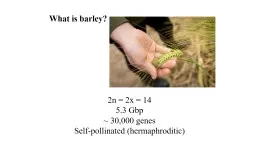PPT-Development and Production of Malting Barley for Canadian
Author : marina-yarberry | Published Date : 2016-09-03
Source CMBTC Source CMBTC Source CMBTC Source CGC Source CGC Region 2011 2012 2013 2014 2015 Western Canada 74320 74888 97483 68536 71995 Eastern Canada 4595 5235
Presentation Embed Code
Download Presentation
Download Presentation The PPT/PDF document "Development and Production of Malting Ba..." is the property of its rightful owner. Permission is granted to download and print the materials on this website for personal, non-commercial use only, and to display it on your personal computer provided you do not modify the materials and that you retain all copyright notices contained in the materials. By downloading content from our website, you accept the terms of this agreement.
Development and Production of Malting Barley for Canadian: Transcript
Download Rules Of Document
"Development and Production of Malting Barley for Canadian"The content belongs to its owner. You may download and print it for personal use, without modification, and keep all copyright notices. By downloading, you agree to these terms.
Related Documents














